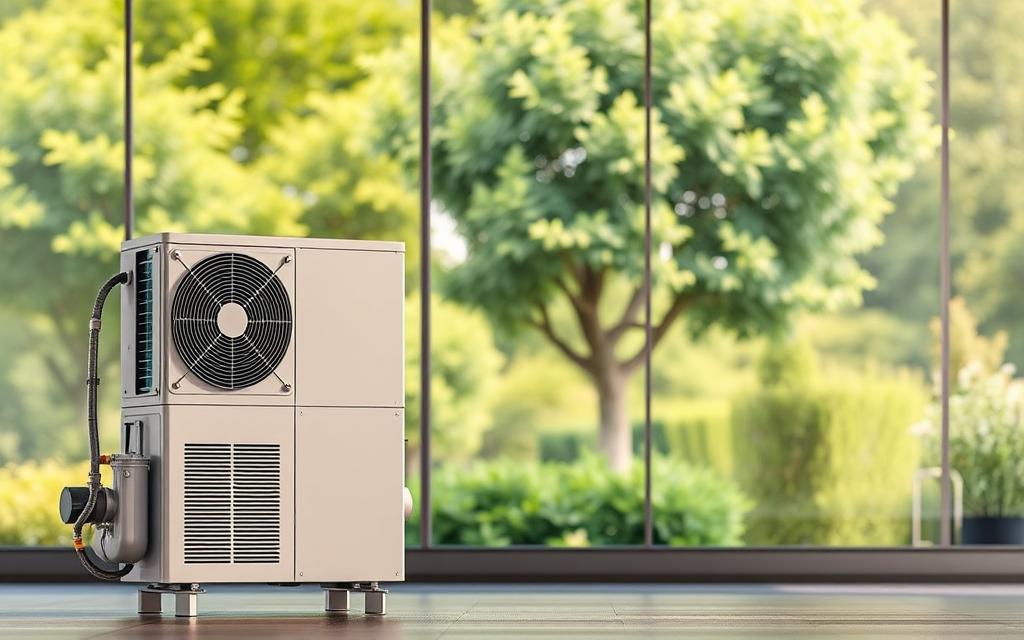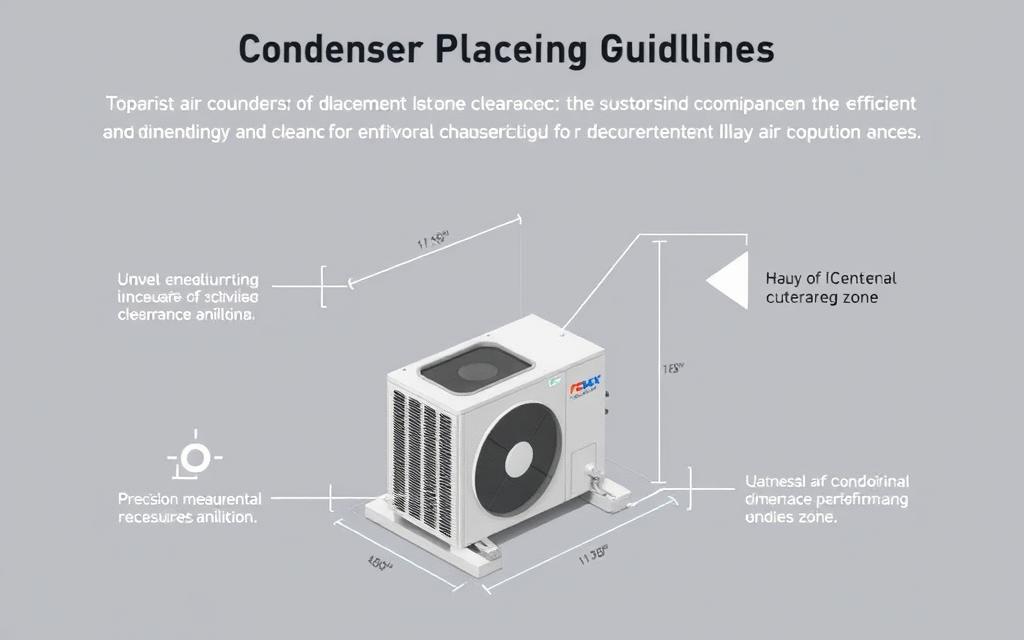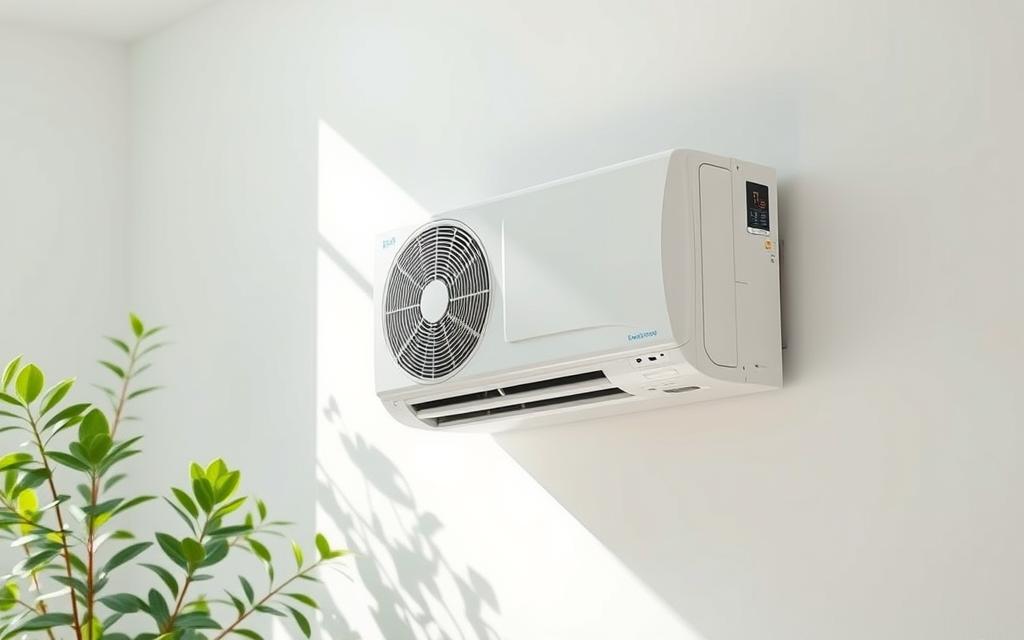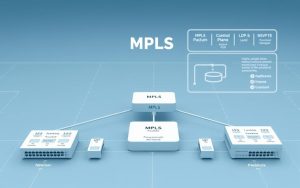Ductless cooling systems have changed how we keep our homes cool. They offer a flexible choice compared to old HVAC setups. These systems use inverter-driven technology to adjust cooling as needed. This means less energy waste and consistent comfort, thanks to Fujitsu’s designs.
These systems don’t need ducts, making them great for updating older homes or adding cooling to new areas. Fujitsu’s tech combines variable-speed compressors with smart sensors for precisely calibrated airflow. They’re so efficient, some models are up to 30% better than standard units, earning ENERGY STAR certifications.
The biggest perk is controlling temperature by zone. You can cool just the areas you need, unlike central systems that cool everything at once. This not only saves energy but also makes ductless systems a smart choice for energy-efficient climate control in homes and businesses.
Understanding Mini Split Inverter Technology
Modern climate control systems have changed a lot with mini split inverter technology. They manage temperature well and cut down on energy waste. Unlike old HVAC units, these systems adjust their output as needed. This is changing how we keep our homes comfortable in the United States.
Core Components of Inverter-Driven Systems
Variable-Speed Compressor Operation
The heart of these systems is the compressor technology. Fujitsu’s latest models have variable-speed compressors. They adjust cooling output between 25-100% capacity. This stops the sudden start and stop of old units, keeping temperatures close to what you want.
DC Brushless Motor Functionality
The compressor works with DC brushless motors. These motors bring three big benefits:
- They use 40% less energy than AC motors
- They are very quiet, at just 19dB
- They last longer, over 15 years
How Inverter Technology Differs From Conventional Systems
Continuous Modulation vs Fixed-Speed Cycling
Old systems work like a switch, wasting energy with constant starts. Inverter models use modulation cycles for better performance. ENERGY STAR data shows they use 35-50% less energy than old units.
| Feature | Inverter System | Conventional System |
|---|---|---|
| Energy Use (Annual) | 850 kWh | 1,400 kWh |
| Temperature Swing | ±0.5°C | ±2°C |
| Compressor Starts/Day | 8-12 | 35-50 |
Power Consumption Patterns Comparison
Inverter systems use energy differently during a cooling season:
- They run at low capacity 70% of the time
- At medium capacity 25% of the time
- Only 5% at full power
This is very different from old units that always run at 100% capacity. For those thinking about upgrading, our guide to mini split heat pump advantages shows the benefits over time.
Advantages of Mini Split Inverter Systems
Modern homes use mini split inverter systems for better climate control and less energy use. These systems have advanced technology and smart features. They offer three main benefits over traditional HVAC systems.

Energy Efficiency Benefits
Inverter systems change how we use energy in two key ways:
SEER ratings exceeding 20+
Top models have Seasonal Energy Efficiency Ratios (SEER) over 23. This is much higher than the 13-15 SEER of old systems. This means they use a lot less power. ENERGY STAR® says inverter systems are 40% more efficient.
| System Type | Average SEER | Standby Power Use | Annual Energy Use (2,000 sq.ft) |
|---|---|---|---|
| Inverter Mini Split | 22-28 | 8-12 Watts | 1,800 kWh |
| Conventional AC | 14-16 | 30-50 Watts | 3,400 kWh |
Reduced standby power consumption
Smart inverters cut down on energy waste by 75%. They use adaptive sleep modes when not in use. This saves 150-200 kWh a year in most homes.
Cost-Saving Potential
Inverter systems cost more to install at first. But they save money in the long run:
Long-term electricity bill reductions
H.W. Flesher’s 24-month study found:
- 32% lower cooling costs in southern U.S. states
- 27% savings in temperate coastal regions
- Payback period of 3-5 years through energy savings
Lower maintenance requirements
Inverter units need less maintenance than old systems:
- 50% fewer service calls
- Less often need to replace filters
- No need for duct cleaning
Enhanced Climate Control Capabilities
These systems offer better comfort through precise engineering:
Precision temperature management (±0.5°C)
Advanced sensors keep room temperatures within half a degree of what you set. This is much better than the 3-4°C swings of old systems. Fujitsu’s tests show 89% of users are happy with the temperature.
“Inverter technology represents the largest leap in residential comfort since programmable thermostats.”
Multi-zone operation possibilities
Homeowners can have up to 8 different climate zones with one outdoor unit. Airlux installations in Texas show:
- 15% better humidity control in bedrooms
- 20% reduced energy use in seldom-occupied spaces
- Custom schedules for each room’s occupancy patterns
Inverter vs Non-Inverter Technology Comparison
Choosing between inverter and non-inverter HVAC systems is more than just the cost. It’s about long-term efficiency, comfort, and how they work. We’ll look at three key areas: energy use, climate control, and noise levels. We’ll use data from top industry leaders to guide us.
https://www.youtube.com/watch?v=_Qa5teuVPRg
Operational Efficiency Differences
Inverter-driven mini splits use 30-50% less energy than fixed-speed units when cooling is not at full demand. They adjust their speed to keep the temperature right, without using too much power. This is different from traditional systems that turn on and off a lot.
Energy utilisation during partial-load conditions
ENERGY STAR shows non-inverter systems waste 18-22% of energy because they start and stop a lot. Inverter systems, however, stay efficient at 60-80% even when cooling is not at full capacity. This is thanks to their ability to adjust the refrigerant flow.
Start-up current requirements comparison
Fixed-speed compressors need 3-6 times their rated current to start, which can be hard on electrical circuits. Fujitsu’s inverter models only need 1.2x, which is much better for your circuits and voltage.
Temperature Control Performance
Inverter systems are better at keeping the temperature just right. They can keep it within ±0.5°C, while traditional units can swing up to ±2°C. This is important for keeping your space comfortable.
Elimination of temperature fluctuations
Inverter systems run at a low speed all the time. This means they don’t have the cold blast then warm-up cycle. This is great for places like bedrooms and home offices where you want the temperature to stay steady.
Humidity management capabilities
Inverter systems can remove 25% more moisture from the air than traditional units. This helps keep mould away in humid climates without making your space too cold.
Noise Level Reductions
Modern inverter systems are very quiet. They operate at levels as low as 19-24 decibels, which is quieter than most refrigerators.
Decibel measurements during operation
Fujitsu’s Halcyon models are especially quiet, with 19 dB at low speed. This is much quieter than traditional window units, which can be as loud as 38-42 dB. ENERGY STAR certifications require systems to be this quiet.
Vibration dampening technologies
Advanced mounting systems and insulated lines in inverter systems stop vibrations. Mitsubishi Electric’s ‘Whisper Mode’ uses special pads and fan designs to reduce noise by up to 70%.
Installation Considerations for Optimal Performance
Getting your mini split inverter installed right is key to its efficiency and life span. These systems offer top-notch climate control. But, they need to be set up following strict HVAC standards. Let’s look at three main steps for a successful installation.

Professional Installation Requirements
Certified techs are crucial for handling refrigerant and electrical connections. Fujitsu’s rules say 3-inch conduit spacing is needed for insulation. Airlux’s studies show their systems work well within a 50ft refrigerant line limit.
Refrigerant Line Routing Best Practices
Right routing stops energy loss and compressor stress:
- Keep elevation changes under 15° per 50ft
- Use foam insulation with vapour barriers
- Steer clear of sharp bends over 90°
Electrical System Compatibility Checks
Technicians must check:
- Circuit breaker ratings match the manufacturer’s specs
- Voltage stays within ±10% of the norm
- Outdoor units have ground fault protection
Sizing Considerations
ENERGY STAR warns against oversizing. It leads to short cycling and 27% higher energy costs in humid areas. Getting the BTU calculations right is essential.
BTU Calculation Methodologies
The Manual J protocol is the top choice. It considers:
- Room size and window areas
- Local climate data
- How often the room is used
Load Calculation Software Tools
Tools like CoolCalc and HVAC-Calc make complex calculations easier. They follow ACCA standards. These tools cut down sizing errors by 68% compared to manual methods.
| Method | Accuracy | Time Required | Best For |
|---|---|---|---|
| Manual J | ±5% | 3-4 hours | Complex layouts |
| Software | ±2% | 45 minutes | Multi-zone systems |
| Rule-of-Thumb | ±25% | 10 minutes | Quick estimates |
Placement Strategies
Granville Gardens’ retrofit project saw a 19% efficiency boost. This was thanks to smart unit placement. Follow these guidelines for the best results.
Indoor Unit Positioning Guidelines
Ensure good airflow by:
- Mounting 7-8 feet above the floor
- Keeping 6-inch clearance from ceilings
- Avoiding direct airflow over seating
Outdoor Condenser Clearance Requirements
For smooth operation, ensure:
- 24-inch clearance on all sides
- 36-inch front access space
- Sloped drainage (¼” per foot)
Conclusion
Mini split inverter technology brings big benefits for those looking for green cooling options. Projects by CHF BC show a 30-40% drop in energy use. This matches Fujitsu’s claims of better efficiency than old systems.
These systems keep temperatures steady, which means less wear and tear. This also cuts down on your energy bills.
ENERGY STAR-certified models are even better, being 15% more efficient than usual units. For older homes, adding inverter-driven HVAC systems is a smart move. H.W. Flesher’s study shows these systems can save £280-£420 a year in the UK.
Getting a pro to install these systems is key. They make sure everything fits right and works well. You might even get green energy rebates, making it a smart investment.
Reach out to local HVAC experts to see how these systems can help your home. They can assess your needs and suggest the best retrofit HVAC solutions.







